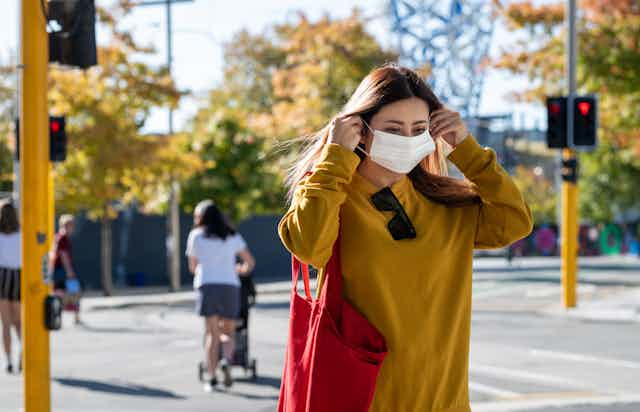Auckland, and possibly other parts of New Zealand, almost certainly have more cases of COVID-19 in the community than the four new cases confirmed yesterday.
Prime Minister Jacinda Ardern activated a resurgence plan late yesterday, placing all of Auckland back under alert level 3 restrictions from today until midnight on Friday to allow time for contacts to be traced and tested.
But until we can identify the chain of transmission, New Zealanders should prepare for restrictions to remain in place for longer.
All four new cases are within one family in South Auckland, with no links yet discovered to quarantine or border facilities. But family members work in different places across different suburbs, which means the restrictions need to apply to the whole city.
When Melbourne found itself in a similar position a month ago, the city’s strategy was to lockdown specific suburbs. Unfortunately this failed to contain the virus.
Read more: Mapping COVID-19 spread in Melbourne shows link to job types and ability to stay home
Quick return to restrictions
Swift and decisive action is important, and we support the decision to place stricter conditions on Auckland and to return the rest of the country to alert level 2. We should all be very cautious.
Everyone working at the border or in managed isolation will be tested and pop-up stations have opened across Auckland to carry out mass testing. But it is quite possible someone within the wider contact network of the cases has travelled outside Auckland. People who have travelled to Auckland in the last two weeks should act as if they are under level 3 restrictions and stay home from work.
Whether we are in Auckland or not, we should all resume social distancing, working from home if we can, and wearing a mask if possible when we go out. If we do the right things now, there’s a good chance we will be able to contain this community outbreak before it spreads too much further.

We’re going to need to do a lot of testing to work out how far the virus has spread. It’s more effective at this stage to target high-risk groups rather than testing people at random. People with symptoms or people who have been identified as close contacts of known cases should be prioritised for testing.
If you are offered a test or you don’t feel well, you should get tested, but if you feel fine, just stay at home.
Contact tracing
Rapid contact tracing is going to be key to getting the virus under control. Our recent modelling shows that if we can trace and quarantine 80% of contacts within two days on average, it will go a long way to containing the outbreak.
Contact tracers are also doing backward tracing – finding the source of infection so we know how many other cases are out there – as well as forward tracing, which means quarantining contacts so they don’t pass the virus on.
For Auckland, moving to alert level 3 reduces the number of contacts most of us have. This will make the job easier for contact tracers over the coming days as they may only have to trace one or two contacts per person rather than ten or more.
Everyone should now draw up a list of where they’ve been and who they’ve seen for the last two weeks. This is also a wake-up call to redouble our efforts to keep diaries of activities and to use the NZ COVID Tracer app to keep a record.
The Tracer app has the added advantage that the Ministry of Health can automatically notify anybody who has visited the same location as a confirmed or potential case. We encourage Aucklanders in particular to check their apps, diaries and bank accounts to compile as much detail as possible of places they have visited or people they have met over the last 14 days.
What happens next
What happens next really depends on the results of the contact tracing investigations already underway. There is a lot of luck involved in the early stages of an outbreak like this one. If we are lucky, many of those infected may not have yet have passed the virus on.
But it’s also possible there may have been a superspreading event, for example at a workplace or social gathering. In that case, there could be a large number of cases already out there. Although the alert level is currently in place until Friday, we should be prepared for this to be extended, depending on how many cases we find in the next three days.
Back in February, when we had our first cases of COVID-19, the situation was very different. We had an open border and most cases were international travellers or their close contacts.
We were also getting around 80 new cases a day by the time we went into lockdown in March. This time we have locked down with a smaller number of cases and we still have strict border restrictions in place.
This should give us confidence that if we all do the right things, we will be able to get the outbreak under control much faster than last time.

